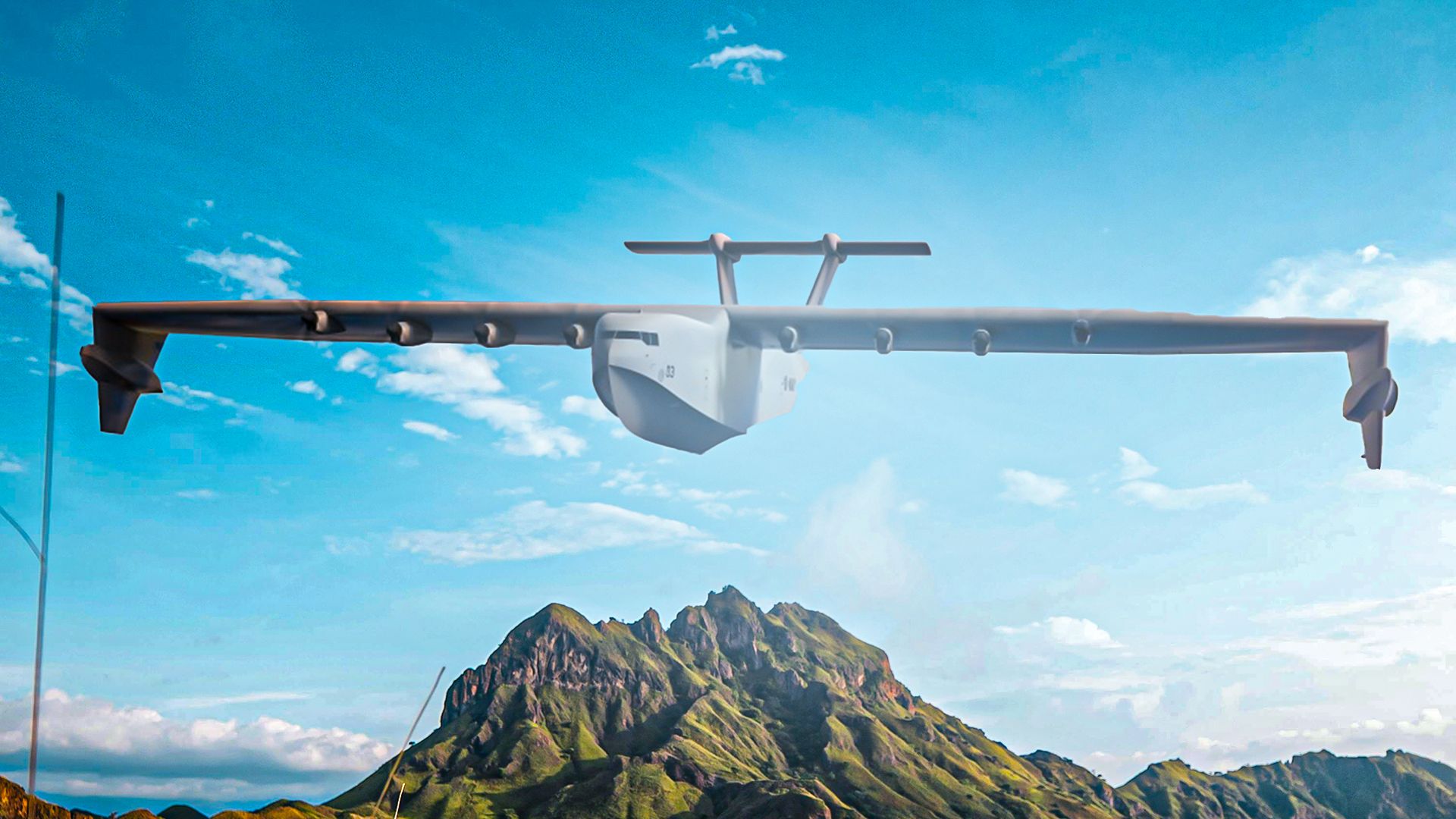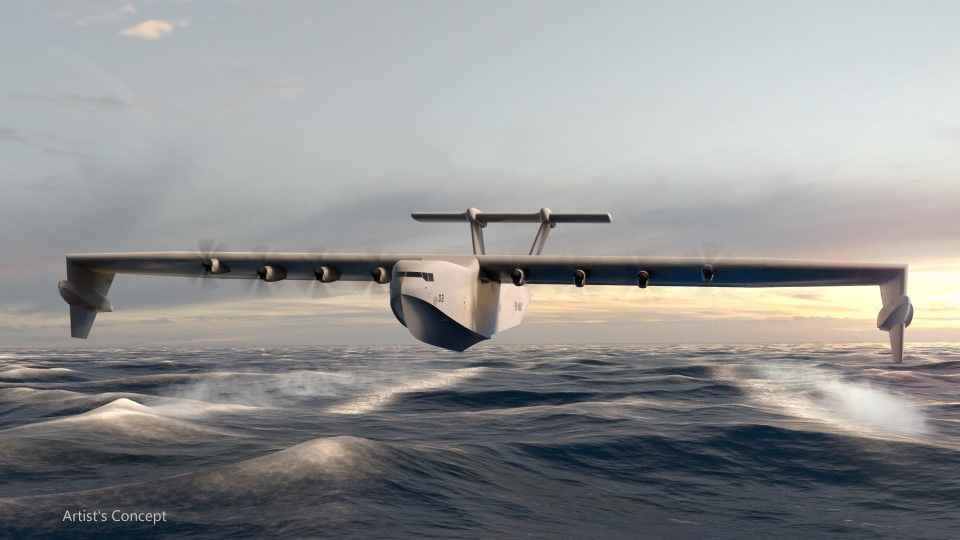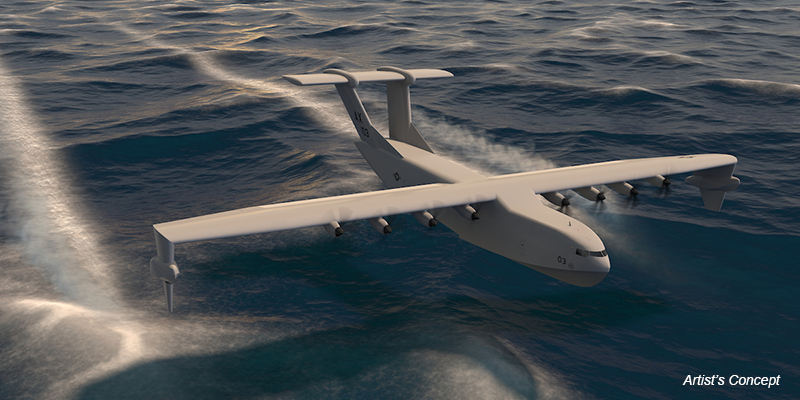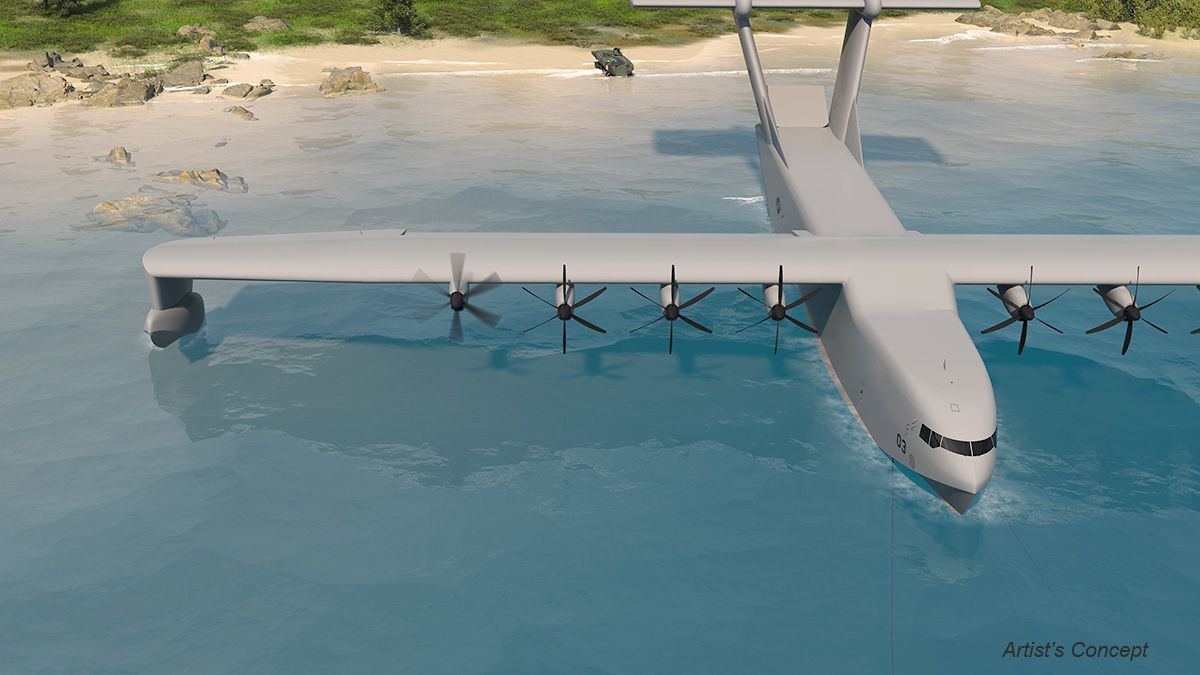Summary
- DARPA developing Liberty Lifter GEV like a boat-airplane combo for fast logistics missions. (Including sea-based search, and rescue).
- The Liberty Lifter aims to tackle the challenges past ekranoplans faced in rough seas, flies at higher altitudes, unlike Soviet craft.
- Liberty Lifter targets to have speed at 180 knots, the payload of 90 tons, wingspan of around 200 feet with projected flight in 2027/2028.
DARPA is working to develop an ekranoplan called the Liberty Lifter with a payload capacity similar to the C-17 Globemaster. Ekranoplans (or ground-effect vehicles (GEVs)) are among the most interesting vehicles and combine a boat with a seaplane. They have long been seen to have huge potential for military transportation, and while the United States has investigated building ekranoplans, they have never come to fruition.
Ground effect is the cushion of compressed air that forms under an aircraft’s wings as it flies just above the ground. During the Cold War, the Soviets led the world in designing ekranoplans (the largest and most impressive ekranoplans built were by the Soviets).
The Liberty Lifter GEV in development
The Liberty Lifter is an ekranoplan currently in development. Its goal is to build an ekranoplan that could transform fast logistics missions for the DOD and commerce. DARPA and its contractor, Aurora Flight Sciences, are developing the Liberty Lifter as a military transport. According to DARPA, the “Liberty Lifter could also provide sea-based search and rescue and disaster response at the scale of ships with the speed of air transport.”
Photo: DARPA
The first demonstrator is expected to be around the size of a C-130 Hercules in terms of payload, but the aim for production is closer to a C-17 Globemaster. The demonstrator will be physically larger than either aircraft, with a wingspan of around 200 feet compared to 132 feet for the C-130 and 170 feet for the C-17. While this is large, it is dwarfed by the canceled Boeing Pelican ekranoplan. The Boeing Pelican would have had a wingspan of 500 feet and have carried a payload of 1.5 million pounds.
|
Liberty Lifter projected capabilities |
|
|---|---|
|
Speed: |
180 knots |
|
Payload: |
90 tons / 180,000 lbs |
|
Wingspan: |
approx. 200 feet |
|
Cruising altitude: |
approx. 100 feet |
|
Power: |
8x 5,000 hp engines |
|
Projected first flight: |
late 2027 / early 2028 |
One of the principal challenges is that they perform poorly in rough seas (a fact that doomed passed ekranoplans). The Liberty Lifter seeks to overcome these challenges that have killed other ekranoplans. It is designed to operate efficiently over long distances and in a wide range of ocean conditions.
Photo: DARPA

Related
History: Five US-Built Demonstrator Aircraft That Never Made It Into Serial Production
Some of the US Air Force’s most remarkable and ambitious aircraft to fly never went into serial production.
Current state of the Liberty Lifter
According to Aerospace America, the Liberty Lifter program is currently in Phase 1b (meaning work is focusing on platform design and risk reduction). It is planned to have a Preliminary Design review early in 2025.
“We will start purchasing long-lead item stuff very shortly thereafter, but my current expectation is that construction will begin in 2026 and last about a year. We’re targeting floating Liberty Lifter sometime in late calendar 2027 — and potentially first flight in late calendar year 2027.” – Liberty Lifter program manager Christopher Kent (reported by Aerospace America)
The Liberty Lifter X-plane’s targeted demonstration flight date is late 2027 or early 2028. The United States military has never commissioned an ekronplan into service. However, the massive wooden WW2 seaplane—the H-4 Hercules (aka Spruce Goose)—did fly once on a test flight (although it didn’t leave the ground effect zone).
Overcoming rough seas
The Liberty Lifter is being designed to operate in high-sea states, including Sea State 4 for takeoff and landing and Sea State 5 for flight in ground effect. Sea State 4 (“moderate” seas) has waves of up to 2.5 meters (8 feet) and would have defeated the Soviet ekranoplans like the massive Caspian Sea Monster. Sea State 5 has waves of up to 4.0 meters (13 feet) and is considered “rough.”
Photo: DARPA
Its ability to operate in rougher seas is partly due to the Liberty Lifter’s planned cruising altitude of around 100 feet (around half its wingspan). This compares to Soviet craft that were 4 to 8 feet off the water (they could realistically only be used in the calm Caspian Sea). The higher altitude means it could be used in the open oceans but also decreases the ground effect.
The Liberty Lifter would also be able to escape the ground effect zone and sustain flight at altitudes of up to 10,000 feet.
The military often needs to transport large amounts of equipment quickly. Ships can do this efficiently, but they are slow. Aircraft can do this quickly, but they are inefficient and expensive. If successfully developed, the Liberty Lifter could get the best of both worlds.

Related
Beriev Be-2500: What Should You Know About The Proposed Super Heavy Amphibian Ground Effect Plane?
If the challenges facing ekranoplans could ever be overcome, ground-effect aircraft like the Be-2500 could be transformative.
Other impressive ekranoplans
The Soviet Union’s Lun-class was the only large ekranoplan to have been commissioned into a navy. The Russians have never fully given up on developing ekranoplans (persistent rumors have been circulating about Russia’s Beriev building the proposed Be-2500 ekranoplan).
|
Purpose |
Number built |
State |
Country |
|
|---|---|---|---|---|
|
Lun-class |
attack/transport |
1 |
retired |
USSR/Russia |
|
Caspian Sea Monster |
prototype |
1 |
crashed |
USSR |
|
Beriev VVA-14 |
antisubmarine warfare |
2 prototypes |
one crashed/one retired |
USSR |
|
Boeing Pelican |
transport |
0 |
canceled |
USA |
|
HESA Bavar 2 |
naval patrol |
12+ |
in service |
Iran |
|
AirFish 8 |
ferry |
2+ |
in development |
Singapore |
Photo: Sergey Anufriev | Shutterstock.com
The potential benefits of ekranoplans are immense, and there is always a motivation to go back to the drawing board and find a design that works. It is unclear if the Liberty Lifter will ever be built or if it will end up fizzling and being cancelled like so many other other ground effect vehicles before it.





